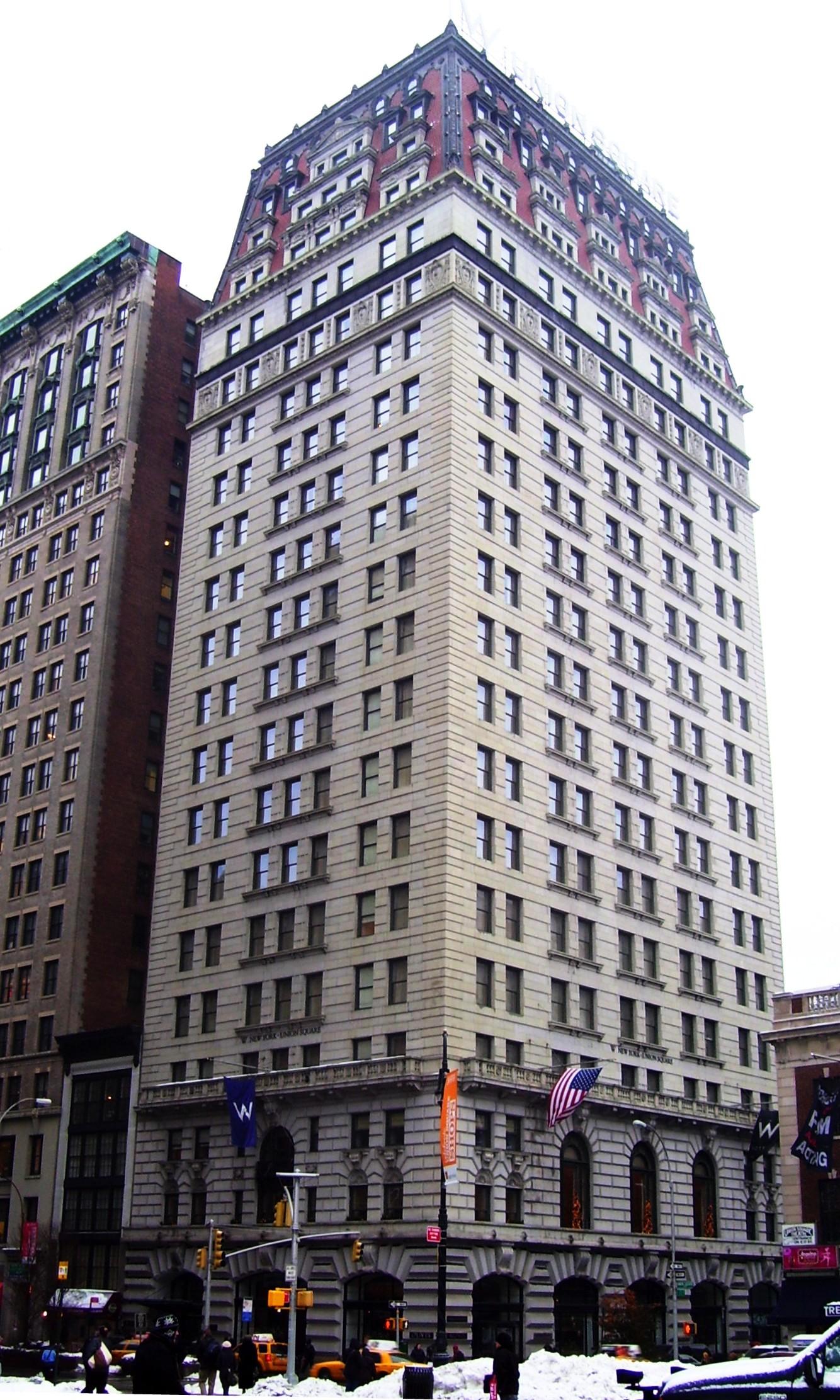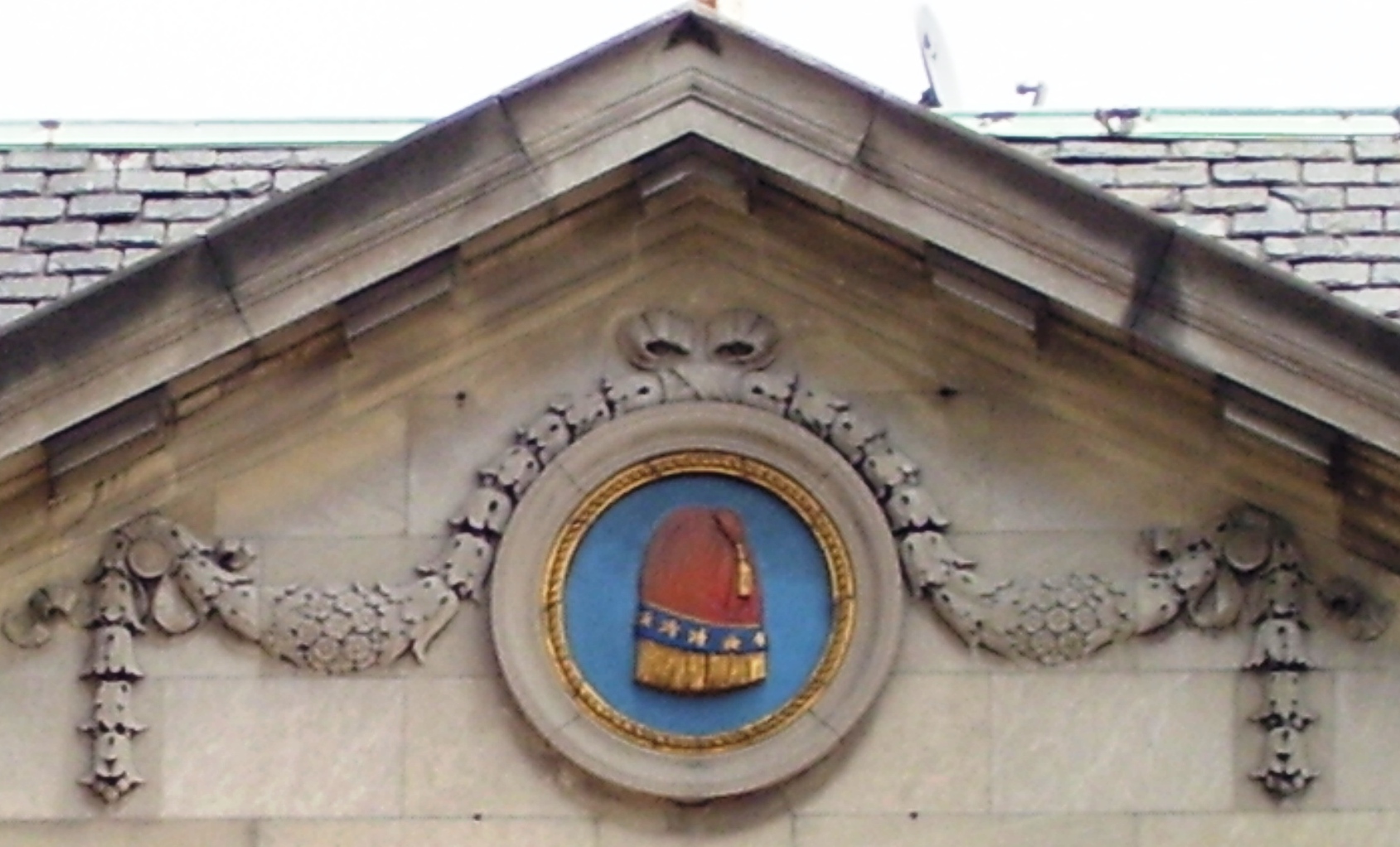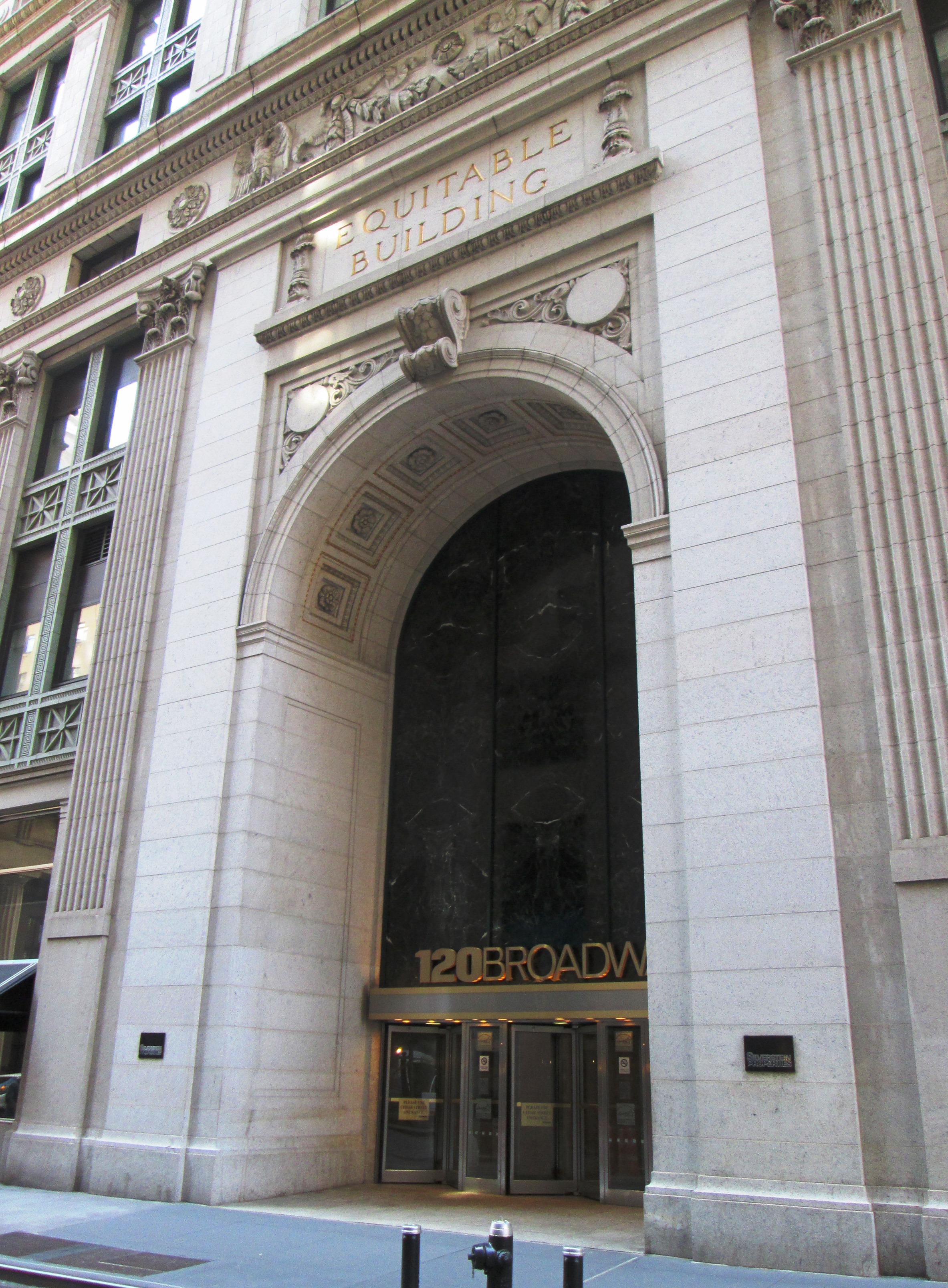|
W New York Union Square
The W New York Union Square is a 270-room, 21-story boutique hotel operated by W Hotels at the northeast corner of Park Avenue South and 17th Street, across from Union Square in Manhattan, New York. Originally known as the Germania Life Insurance Company Building, it was designed by Albert D'Oench and Joseph W. Yost and built in 1911 in the Beaux-Arts style. The W New York Union Square building was initially the headquarters of the Germania Life Insurance Company. In 1917, when the company became the Guardian Life Insurance Company of America, the building was renamed the Guardian Life Insurance Company Building. A four-story annex to the east was designed by Skidmore, Owings & Merrill and was completed in 1961. Guardian Life moved its offices out of the building in 1999, and the W New York Union Square opened the following year. The main building, part of the hotel, was added to the National Register of Historic Places in 2001, and was designated a city landmark by the New ... [...More Info...] [...Related Items...] OR: [Wikipedia] [Google] [Baidu] |
W New York Union Square
The W New York Union Square is a 270-room, 21-story boutique hotel operated by W Hotels at the northeast corner of Park Avenue South and 17th Street, across from Union Square in Manhattan, New York. Originally known as the Germania Life Insurance Company Building, it was designed by Albert D'Oench and Joseph W. Yost and built in 1911 in the Beaux-Arts style. The W New York Union Square building was initially the headquarters of the Germania Life Insurance Company. In 1917, when the company became the Guardian Life Insurance Company of America, the building was renamed the Guardian Life Insurance Company Building. A four-story annex to the east was designed by Skidmore, Owings & Merrill and was completed in 1961. Guardian Life moved its offices out of the building in 1999, and the W New York Union Square opened the following year. The main building, part of the hotel, was added to the National Register of Historic Places in 2001, and was designated a city landmark by the New ... [...More Info...] [...Related Items...] OR: [Wikipedia] [Google] [Baidu] |
Beaux-Arts Architecture
Beaux-Arts architecture ( , ) was the academic architectural style taught at the École des Beaux-Arts in Paris, particularly from the 1830s to the end of the 19th century. It drew upon the principles of French neoclassicism, but also incorporated Renaissance and Baroque elements, and used modern materials, such as iron and glass. It was an important style in France until the end of the 19th century. History The Beaux-Arts style evolved from the French classicism of the Style Louis XIV, and then French neoclassicism beginning with Style Louis XV and Style Louis XVI. French architectural styles before the French Revolution were governed by Académie royale d'architecture (1671–1793), then, following the French Revolution, by the Architecture section of the Académie des Beaux-Arts. The Academy held the competition for the Grand Prix de Rome in architecture, which offered prize winners a chance to study the classical architecture of antiquity in Rome. The formal neoclassicism ... [...More Info...] [...Related Items...] OR: [Wikipedia] [Google] [Baidu] |
44 Union Square
44 Union Square, also known as 100 East 17th Street and the Tammany Hall Building, is a three-story building at 44 Union Square East in Union Square, Manhattan, in New York City. It is at the southeast corner of Union Square East/Park Avenue South and East 17th Street. The Neo-Georgian architecture, neo-Georgian structure was erected in 1928–1929 and designed by architects Thompson, Holmes & Converse and Charles B. Meyers for the Tammany Society political organization, also known as Tammany Hall. It is the organization's oldest surviving headquarters building. The Tammany Society had relocated to 44 Union Square from a previous headquarters on nearby 14th Street (Manhattan), 14th Street. At the time of the building's commission, the society was at its maximum political popularity with members such as U.S. senator Robert F. Wagner, governor Al Smith, and mayor Jimmy Walker. However, after Tammany Hall lost its influence in the 1930s, the building was sold to an affiliate of ... [...More Info...] [...Related Items...] OR: [Wikipedia] [Google] [Baidu] |
Columbia University
Columbia University (also known as Columbia, and officially as Columbia University in the City of New York) is a private research university in New York City. Established in 1754 as King's College on the grounds of Trinity Church in Manhattan, Columbia is the oldest institution of higher education in New York and the fifth-oldest institution of higher learning in the United States. It is one of nine colonial colleges founded prior to the Declaration of Independence. It is a member of the Ivy League. Columbia is ranked among the top universities in the world. Columbia was established by royal charter under George II of Great Britain. It was renamed Columbia College in 1784 following the American Revolution, and in 1787 was placed under a private board of trustees headed by former students Alexander Hamilton and John Jay. In 1896, the campus was moved to its current location in Morningside Heights and renamed Columbia University. Columbia scientists and scholars have ... [...More Info...] [...Related Items...] OR: [Wikipedia] [Google] [Baidu] |
Curtain Wall (architecture)
A curtain wall is an outer covering of a building in which the outer walls are non-structural, utilized only to keep the weather out and the occupants in. Since the curtain wall is non-structural, it can be made of lightweight materials, such as glass, thereby potentially reducing construction costs. An additional advantage of glass is that natural light can penetrate deeper within the building. The curtain wall façade does not carry any structural load from the building other than its own dead load weight. The wall transfers lateral wind loads that are incident upon it to the main building structure through connections at floors or columns of the building. A curtain wall is designed to resist air and water infiltration, absorb sway induced by wind and seismic forces acting on the building, withstand wind loads, and support its own weight. Curtain walls may be designed as "systems" integrating frame, wall panel, and weatherproofing materials. Steel frames have largely given w ... [...More Info...] [...Related Items...] OR: [Wikipedia] [Google] [Baidu] |
Flange
A flange is a protruded ridge, lip or rim (wheel), rim, either external or internal, that serves to increase shear strength, strength (as the flange of an iron beam (structure), beam such as an I-beam or a T-beam); for easy attachment/transfer of contact force with another object (as the flange on the end of a pipe (fluid conveyance), pipe, steam cylinder, etc., or on the lens mount of a camera); or for stabilizing and guiding the movements of a machine or its parts (as the inside flange of a railroad car, rail car or tram train wheel, wheel, which keep the wheels from derailment, running off the rail profile, rails). Flanges are often attached using bolts in the pattern of a bolt circle. The term "flange" is also used for a kind of tool used to form flanges. Plumbing or piping A flange can also be a plate or ring to form a rim at the end of a pipe when fastened to the pipe (for example, a closet flange). A blind flange is a plate for covering or closing the end of a pipe. A ... [...More Info...] [...Related Items...] OR: [Wikipedia] [Google] [Baidu] |
Plate Girder
A plate girder bridge is a bridge supported by two or more plate girders. Overview In a plate girder bridge, the plate girders are typically I-beams made up from separate structural steel plates (rather than rolled as a single cross-section), which are welded or, in older bridges, bolted or riveted together to form the vertical web and horizontal flanges of the beam. In some cases, the plate girders may be formed in a Z-shape rather than I-shape. The first tubular wrought iron plate girder bridge was built in 1846-47 by James Millholland for the Baltimore and Ohio Railroad. Plate girder bridges are suitable for short to medium spans and may support railroads, highways, or other traffic. Plate girders are usually prefabricated and the length limit is frequently set by the mode of transportation used to move the girder from the bridge shop to the bridge site. Generally, the depth of the girder is no less than the span, and for a given load bearing capacity, a depth of around ... [...More Info...] [...Related Items...] OR: [Wikipedia] [Google] [Baidu] |
Lightwell
In architecture, a lightwell,light well, light-well sky-well,skywell, sky well or air shaft is an unroofed or roofed external space provided within the volume of a large building to allow light and air to reach what would otherwise be a dark or unventilated area. Lightwells may be lined with glazed bricks to increase the reflection of sunlight within the space. Lightwells may have sunlight reflecting mirrors on the top of light well. Lightwells serve to reduce the necessity for electric lighting, add a central space within the building, and provide an internal open space for windows to give an illusion of having a view outside. Area or areaway A subterranean lightwell by any frontage of a building for light to a basement is also called an area (or areaway in North American usage). Ancient history The lightwell was used in ancient civilizations, such as the Egyptians and at the Palace of Knossos on Minoan Crete. There are also instances of lightwell use by the Romans, the impl ... [...More Info...] [...Related Items...] OR: [Wikipedia] [Google] [Baidu] |
Mansard Roof
A mansard or mansard roof (also called a French roof or curb roof) is a four-sided gambrel-style hip roof characterised by two slopes on each of its sides, with the lower slope, punctured by dormer windows, at a steeper angle than the upper. The steep roof with windows creates an additional floor of habitable space (a garret), and reduces the overall height of the roof for a given number of habitable storeys. The upper slope of the roof may not be visible from street level when viewed from close proximity to the building. The earliest known example of a mansard roof is credited to Pierre Lescot on part of the Louvre built around 1550. This roof design was popularised in the early 17th century by François Mansart (1598–1666), an accomplished architect of the French Baroque period. It became especially fashionable during the Second French Empire (1852–1870) of Napoléon III. ''Mansard'' in Europe (France, Germany and elsewhere) also means the attic or garret space itself, not ... [...More Info...] [...Related Items...] OR: [Wikipedia] [Google] [Baidu] |
Equitable Building (Manhattan)
The Equitable Building is an office skyscraper located at 120 Broadway between Pine and Cedar Streets in the Financial District of Lower Manhattan in New York City. The skyscraper was designed by Ernest R. Graham in the neoclassical style, with Peirce Anderson as the architect-in-charge. It is tall, with 38 stories and of floor space. The building's articulation consists of three horizontal sections similar to the components of a column, namely a base, shaft, and capital. The Equitable Building replaced the Equitable Life Building, the previous headquarters of the Equitable Life Insurance Company, which burned down in 1912. Work on the Equitable Building started in 1913 and was completed in 1915. Upon opening, it was the largest office building in the world by floor area. The Equitable Building hosted a variety of tenants and, by the 1920s, was the most valuable building in New York City. The Equitable Life Insurance Company, the building's namesake, occupied a small po ... [...More Info...] [...Related Items...] OR: [Wikipedia] [Google] [Baidu] |
Metropolitan Life Insurance Company Tower
The Metropolitan Life Insurance Company Tower (colloquially known as the Met Life Tower and also as the South Building) is a skyscraper occupying a full block in the Flatiron District of Manhattan in New York City. The building is composed of two sections: a tower at the northwest corner of the block, at Madison Avenue and 24th Street, and a shorter east wing occupying the remainder of the block bounded by Madison Avenue, Park Avenue South, 23rd Street, and 24th Street. The South Building, along with the North Building directly across 24th Street, comprises the Metropolitan Home Office Complex, which originally served as the headquarters of the Metropolitan Life Insurance Company (now publicly known as MetLife). The South Building's tower was designed by the architectural firm of Napoleon LeBrun & Sons and erected between 1905 and 1909. Inspired by St Mark's Campanile, the tower features four clock faces, four bells, and lighted beacons at its top, and was the tallest build ... [...More Info...] [...Related Items...] OR: [Wikipedia] [Google] [Baidu] |
New York Life Building
The New York Life Building is the headquarters of the New York Life Insurance Company at 51 Madison Avenue in New York City. The building, designed by Cass Gilbert, abuts Madison Square Park in the Rose Hill and NoMad neighborhoods of Manhattan. It occupies an entire city block bounded by Madison Avenue, Park Avenue South, and 26th and 27th Streets. The New York Life Building was designed with Gothic Revival details similar to Gilbert's previous commissions, including 90 West Street and the Woolworth Building. The tower is 40 stories tall, consisting of 34 office stories topped by a pyramidal, gilded six-story roof. At the time of the building's construction, many structures were being built in the Art Deco style, and so Gilbert's design incorporated Art Deco influences in its massing while retaining the older-style Gothic Revival detailing. The New York Life Building is distinguished from the skyline by its gilded roof. The New York Life Building was constructed in 1927 ... [...More Info...] [...Related Items...] OR: [Wikipedia] [Google] [Baidu] |









